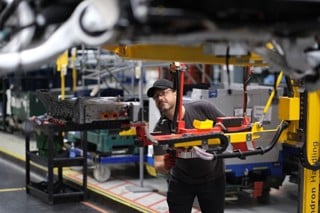Another option would be for fleet companies to have a card reading device which accesses the data from the DVLA.
However, this approach raises issues over data protection as well as incurring extra costs in equipment and training.
What other options should the DVLA be looking at?
Malcolm Maycock, managing director of the Licence Bureau, believes that the best solution is for fleets to have compulsory licence checking for anyone who is driving for an organisation.
“There should be no need for smart cards or documents being produced by the individual needing to drive,” he says.
“The business should be able to request the data with or without the consent of the driver.
“In an ideal world, a company would be able to place a marker on the drivers record and then DVLA would send an update if the record changed in any way.
The company could then confirm if it wanted the information or remove the marker.”
And Ian Gallagher agrees: “The DVLA must provide a free online service where the holder and an employer is able to check, at no cost, the validity of a licence in real-time prior to the removal of the counterpart.”
Damian James believes that the best solution would be to allow fleets access to the DVLA database.
“However, I very much doubt that DVLA will go down this route,” he says.
“The whole arena of driver licensing is becoming exceptionally complex, and fleets really need look at getting in expert assistance.”
The current options
Managing it in-house
The cheapest way to check driving licences is manually, in-house.
The downside is the time and administration involved.
There is potentially a greater risk of errors and data compliance issues unless a robust system is in place.
Clear Channel is one fleet that does not outsource driver licence checks as it has “the resources and technical ability to keep a secure and comprehensive database in-house”.
The company’s system has been confirmed to be adequate by the Vehicle and Operator Services Agency (VOSA).
Licence details are recorded on the fleet database from the moment a driver starts with the organisation.
This includes their licence number, entitlement, the date that driver passed the Group ‘B’ test, the date the licence was checked as well as endorsements, dates and offence codes.
The licence check frequency is selected based on the number of penalty points accumulated by each drive.
Each month, reports are compiled of Clear Channel fleet drivers whose checks are imminent; this covers those that registered with the company several years previously to the current day to ensure all checks are up-to-date.
Drivers who are due for a check are then notified and in turn provide their licence to the management team.
These are measured against the following criteria:
- Licence details and number match the previous one recorded
- The address matches that held on the system.
- Photocard issue number matches the paper counterpart
- Current endorsements must match those on the database.
- The licence copy of their nominated driver
Clear Channel suggests that keeping the process in-house leads to a quicker response from line managers and drivers to queries.
It also means the licence details can be used as part of the company’s risk assessment process.




















Paul Allison - 23/09/2013 16:09
Tying the driver license checking to the fleet provider may reduce the management overheads initially, but then ties the fleet customer to that provider for both vehicle provision and driver management, making switching suppliers a more complicated process.